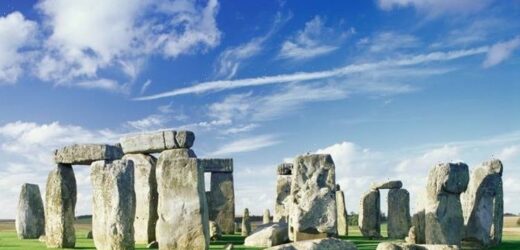Stonehenge: Archaeologists discover 'prehistoric village'
We use your sign-up to provide content in ways you’ve consented to and to improve our understanding of you. This may include adverts from us and 3rd parties based on our understanding. You can unsubscribe at any time. More info
A research team led by English Heritage found that the builders ate sweet treats they foraged for and then cooked, like hazelnuts, crab apples and other fruit. Experts have been working at Durrington Walls, which is a nearby settlement inhabited by the builders of Stonehenge around 2,500 BC. Durrington Walls is two miles (3.2 km) northeast of Stonehenge, but it’s located within the Stonehenge World Heritage Site.
While there is no direct evidence of the pastry being used, people at the time are said to have been well aware of how to grow cereal crops and could have made pastry from wheat, hazelnut or acorn flour to make their own Neolithic mince pies.
English Heritage said that these people could have baked these festive treats by using a flat stone or ceramic pot heated in the embers of a fire.
Susan Greaney, English Heritage’s senior properties historian said: “Adding meat fats to hazelnuts and fruit would have made a great energy bar, full of calories.
“Such foods might have been eaten for celebration as well as sustenance, with the sharing of food helping the community to bond, encouraging people to travel from far and wide to help build Stonehenge.
“We’ll never know for certain what recipes they favoured, but it’s fun to imagine travellers being greeted with a tray of mince pies.”
Remnants of charred plant remains have led researchers to suggest recipes may have been followed to help preserve and make foods palatable.


It had already been understood that those who built Stonehenge, which is on the Salisbury Plain in Wiltshire, ate a diet that consisted of pork, beef and dairy.
Until now, it was not known whether they consumed sweeter foods like fruits and even mince pies.
Inspired by the spectacular discovery, English Heritage volunteers will be baking festive pies around the hearth in the Neolithic Houses at Stonehenge every Monday in December.
Susan Greaney, the charity’s senior properties historian said: “We know that midwinter and feasting were really important to the builders of Stonehenge.

“Thanks to the Stonehenge Riverside Project, we’re lucky to have evidence which tells us that they had access to nutritious fruit and nuts and that they may even have made and cooked recipes.”
Earlier this month, a number of deep pits uncovered at Durrington Walls were confirmed to be human-made.
DON’T MISS
Putin sends FIVE minute warning for new weapon to wipe out Ukraine [REVEAL]
‘Game-changing’ discovery could improve insulation by 30% [INSIGHT]
‘Potentially hazardous’ Eiffel Tower-sized asteroid passing Earth [REPORT]


They were discovered last year with experts originally believing they were part of the landscape.
Some experts originally rejected the claims that they were manmade.
The 20 pits, which are over 30 feet across and 16 feet deep, form a circle shape around Durrington Walls.
Source: Read Full Article


